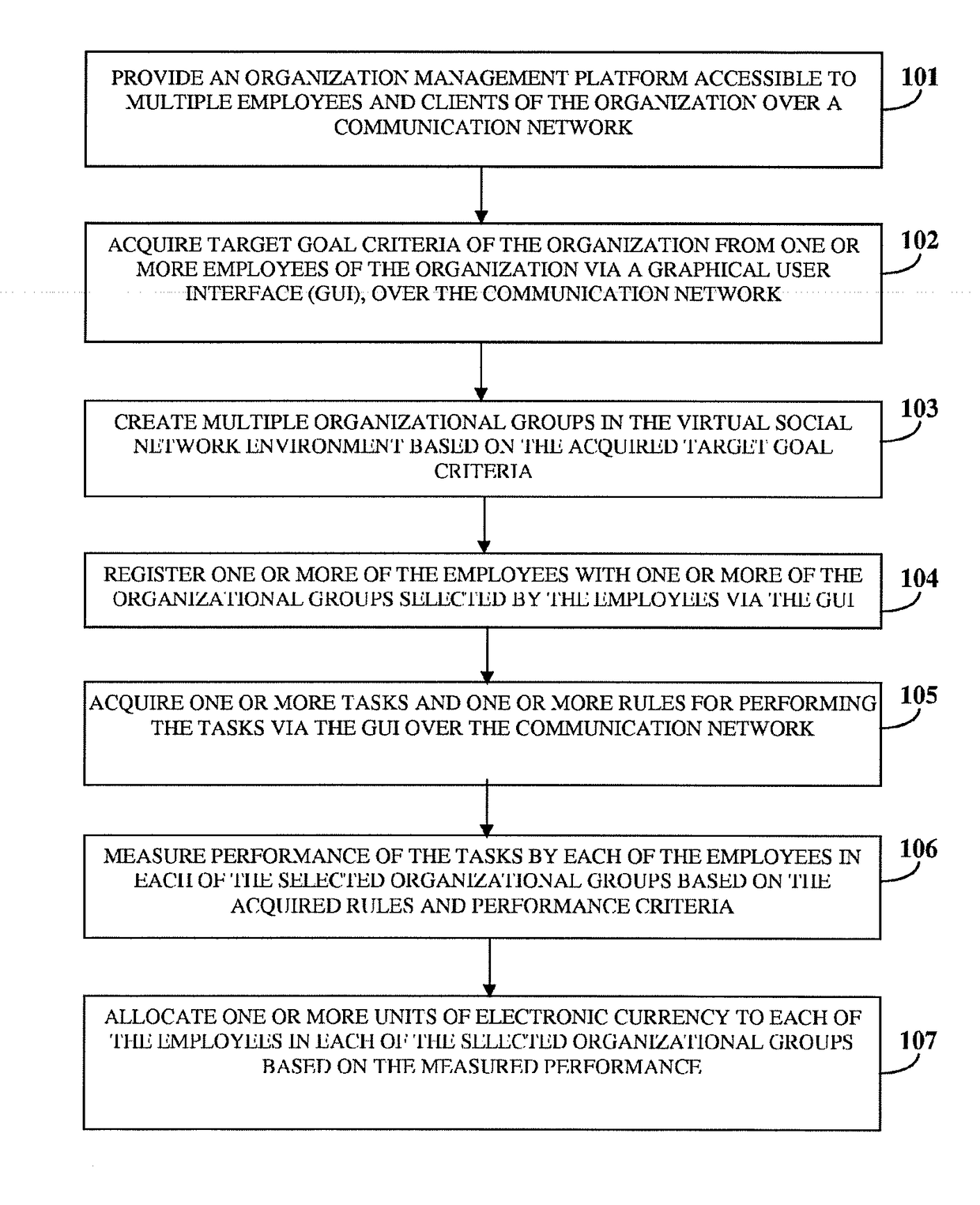Social networking system for organization management
a social networking and organization management technology, applied in the field of social networking systems for organization management, can solve the problems of affecting the success of the organization, and reducing the value of the organization,
- Summary
- Abstract
- Description
- Claims
- Application Information
AI Technical Summary
Benefits of technology
Problems solved by technology
Method used
Image
Examples
Embodiment Construction
[0037]FIG. 1 illustrates a computer implemented method for managing an organization in a virtual social network environment. As used herein, the term “organization” refers to any institution that employs or manages individuals for performing target goals in different industries, for example, the services industry comprising healthcare, information technology, insurance, finance, manufacture, fast moving technology companies, etc. The organizations comprise, for example, corporate organizations, government agencies, offices, educational institutions, medical organizations, etc. For purposes of illustration, the detailed description refers to management of an organization such as a company in a corporate environment; however the scope of the computer implemented method and system disclosed herein is not limited to management of employees in a company but may be extended to include management of any set of individuals in multiple different goal based environments, for example, industri...
PUM
 Login to View More
Login to View More Abstract
Description
Claims
Application Information
 Login to View More
Login to View More - R&D
- Intellectual Property
- Life Sciences
- Materials
- Tech Scout
- Unparalleled Data Quality
- Higher Quality Content
- 60% Fewer Hallucinations
Browse by: Latest US Patents, China's latest patents, Technical Efficacy Thesaurus, Application Domain, Technology Topic, Popular Technical Reports.
© 2025 PatSnap. All rights reserved.Legal|Privacy policy|Modern Slavery Act Transparency Statement|Sitemap|About US| Contact US: help@patsnap.com



